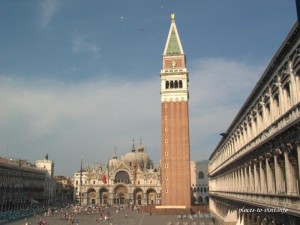From Cocoons to Mud Huts – Psychographics and Why It’s Key to Travel & Tourism Marketing
When segmenting your audience and positioning your brand in travel and tourism marketing, psychographics is key and in particular how values and personality manifest themselves in ‘preferred level of cultural immersion’.
I described what I regarded to be the key segmentation criteria in travel and tourism marketing in brief in a previous post. I now want to delve a little deeper into one of those in particular which I consider to be absolutely key – psychographics.
The whole area of psychographics, a phrase that describes values, personality and lifestyle, first became of practical rather than theoretical use to me when I was at Simply Travel, especially when comparing and contrasting the brand with it’s ‘sister’ brand in TUI’s Specialist Sun Division, Magic Travel Group (rest in peace).
I’d had passed on to me via a colleague that one of the TUI senior management had described the only difference between the 2 brands as distribution (Simply was mainly direct and Magic mainly trade) but I regarded this as a misguided observation. The distribution difference was a manifestation of the core difference between the 2 brands, and that was the ‘level of cultural immersion’ the 2 brand’s customers preferred – a manifestation of their values and personality.
Simply core customers were very much at the ‘live like the locals’ end of the spectrum. For them, the sight of more than a small gaggle of fellow British tourists was a cause for dispair. Local people, local fare and ‘authentic’ lodgings (or their perception of authentic) was at the heart of their ideal holiday experience. By contrast, Magic core travellers preferred to ‘observe’ rather than ‘interact’ and it was more about ‘show’ than ‘do’ – they’d be the sort you see dining in one of the overpriced restaurants in St Marks in Venice, doing organised excursions to see the major sites or going to the local ‘cultural’ show in their 5 star hotel.
I also felt these differences in approach were reflected in their purchase behaviour – Simply customers searching out the experience provider direct, Magic ones taking the ‘safer’ route of relying on their trusted travel agent.
Understanding where along this ‘cultural immersion’ line our customers sat helped inform our product strategy, our service strategy and our marketing strategies. For example, Simply properties had to be away from mainstream foreign tourism and feel authentic whereas Magic’s properties were more showy and in the mainstream destinations, particularly the ‘places to be seen’. Magic reps were smartly uniformed whilst Simply’s wore their own clothes to blend into their environment and create a ‘traveller to local’ rather than ‘tourist to rep’ style relationship.
I came across the best formal segmentation model for this theory a couple of year’s later whilst doing a consultancy stint at APT. It was produced by Tourism Australia, was entitled ‘In it for the Long Haul’ and mapped 5 major groups. 2 were inexperienced traveller groups that had yet to settle on a preferred type of travel. The other 3 were Cocoon Travellers (take me to the main sites with all the comforts of home), Comfort Adventurers (I want to interact with the locals but I’d like to stay somewhere comfy too) and Self Challenges (show me where the mud huts are, I’ll sleep on the floor like the locals). I’ve attached a link to this excellent piece of research which although 6 years old still makes for interesting and relevant reading (In it For the Long Haul – Tourism Australia).
The particularly interesting thing was that these ‘psychographic characteristics’, although they had some demographic biases, were observed across all age groups and lifestages. It’s for this reason that I believe that when positioning your brand, this key psychographic dimension should be at the top of your list.
For example, if you’re a destination specialist and want to develop your business, you should look to what experiences you need to offer to those not catered for in your existing offering. If you’re only offering self drive, you may be missing out on a market that wants to be more cocooned and would prefer an inclusive touring experience. Conversely, if you cater for one of these psychographic groups only, then a more relevant growth strategy may be to spread your offering geographically, as Simply and Magic did, to attract more business from your existing customers but to new destinations.
Even if you’re a tourism attraction, you need to remember that some will feel uncomfortable with activities that require them to ‘get involved’ whereas others will get frustrated with an experience which is all about observing. To maximise satisfaction, you have to cater for both audiences.
That’s not too discount other segmentation criteria. Lifestage in particular is also a very important variable and I do think that people can ‘subsume’ their psychographic preferences to a degree when thinking of the greater good, especially when kids are involved. However, it’s likely the ideal will be combine both their lifestage requirements and their required level of cultural immersion. I’m off to Lefkas in a couple of weeks – authentic, unspoilt Greece, albeit in the grip of a financial crisis. But my compromise is heading for a cluster of villas around a pool where other families go and where my little boy can mix and play with kids of his own age. I’d probably rather be in the heart of Africa sleeping with the locals in a mud hut but it could be worse – I could be at Butlins.


